This load case is similar to OC4 P2 LC3.1 (in which the wave direction is zero degrees rather than 30 degrees in this load case). Generally speaking, the comparisons presented here are naturally quite similar also.
Flexcom's heave response shows close agreement with the other software tools, in terms of response amplitude, period and phase. Results from Bladed (GH) show a heave response which is slightly larger than the other software tools.
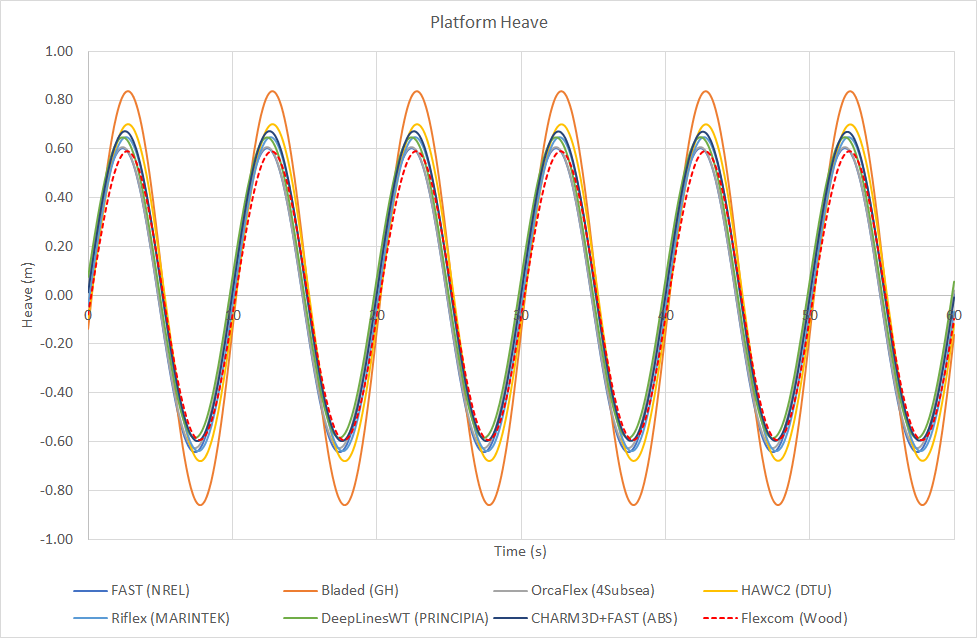
Although the surge response shows some variation across the different software products (depending on how drift forces are being modelled - refer to OC4 P2 LC2.1 for further information), the inclusion of wind tends to improve the correlation in surge results. This is because the wind thrust force is much larger than the hydrodynamic drift force, and hence the mean surge offset is significantly greater when wind is included.
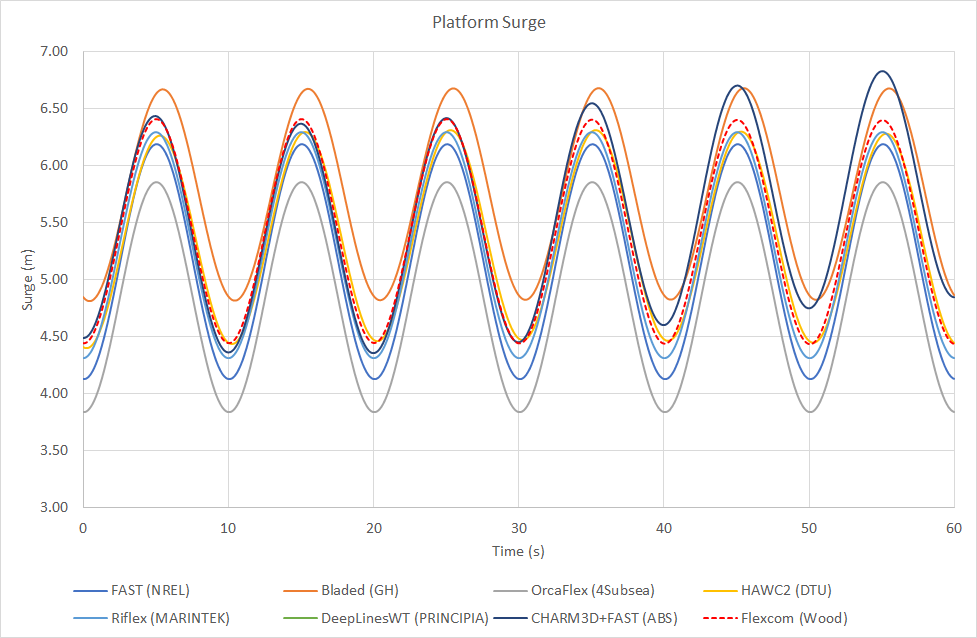
The sway response shows some variation across the different software products (depending on how drift forces are being modelled - refer to OC4 P2 LC2.1 for further information).
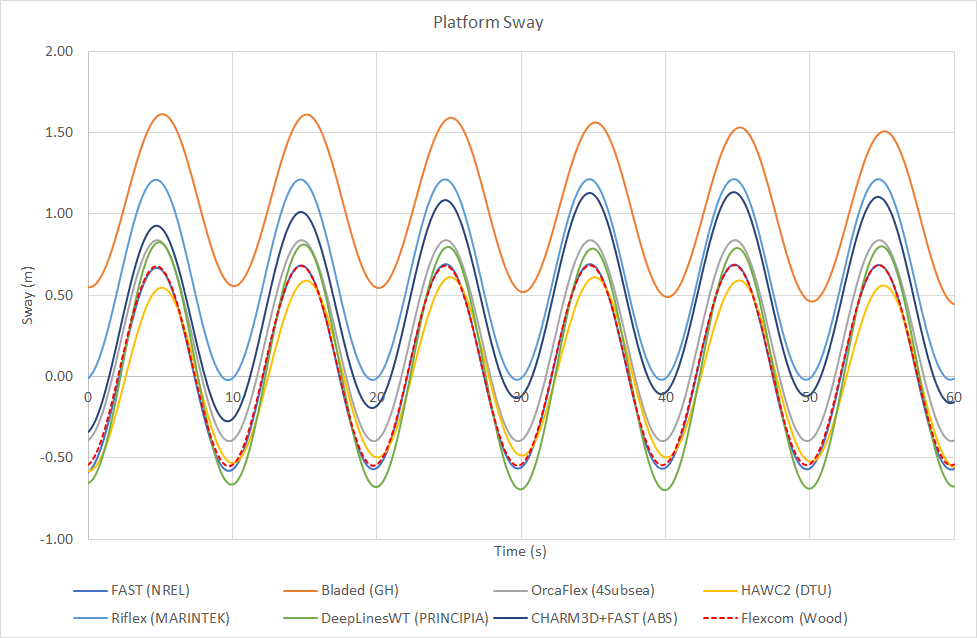
Flexcom's yaw results appear inconsistent with the other tools. The mean yaw is greater, and the periodic variation in yaw appears to be out of phase. This requires further investigation on our part, but it could be due to a difference in convention only.
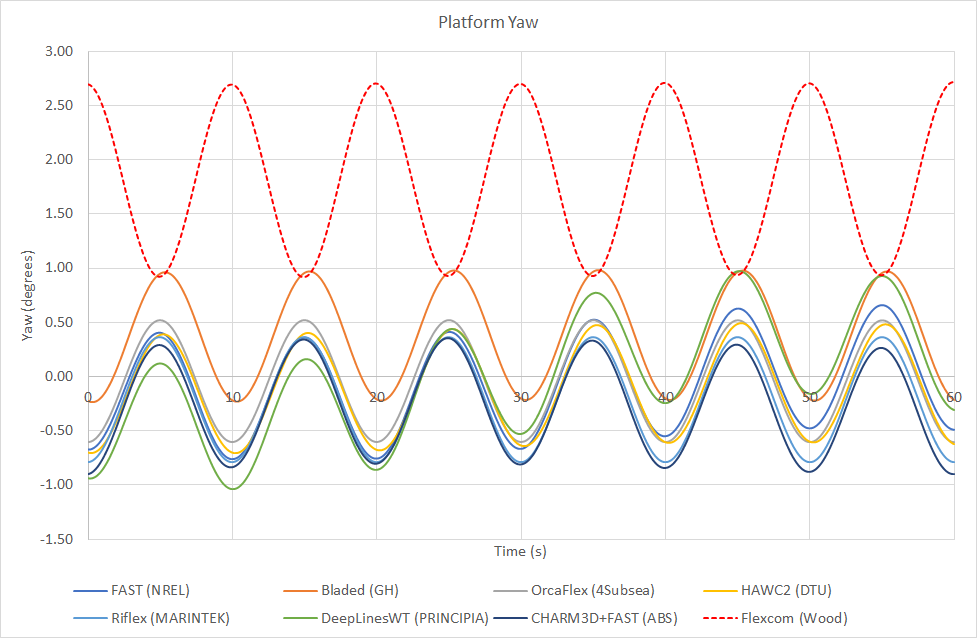
Flexcom's roll response shows close agreement with the other software tools, in terms of response amplitude, period and phase. Results from Bladed (GH) show a roll response which is slightly larger than the other software tools.
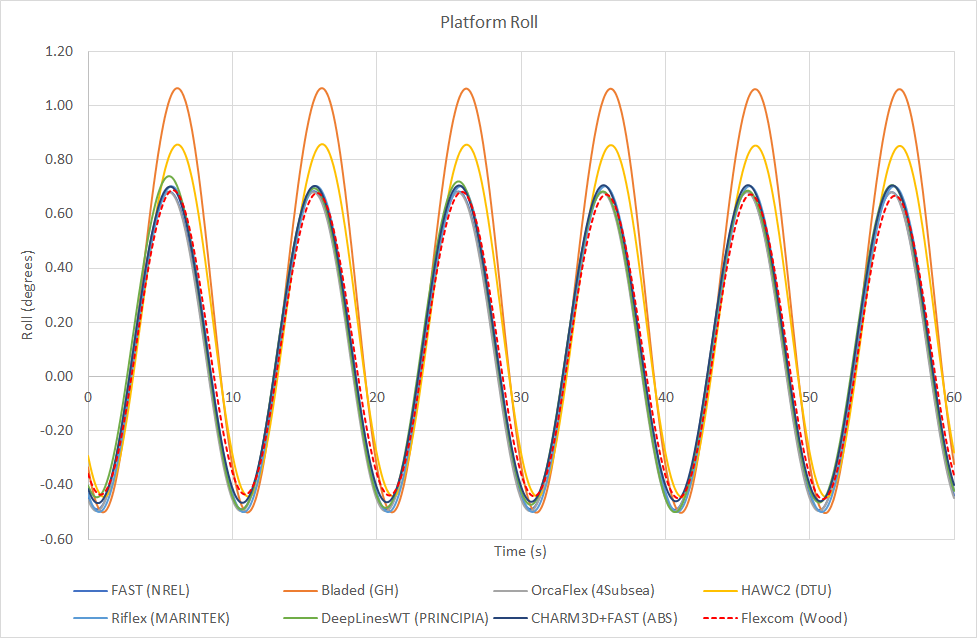
Flexcom's pitch response shows reasonable agreement with the other software tools, in terms of response amplitude, period and phase.
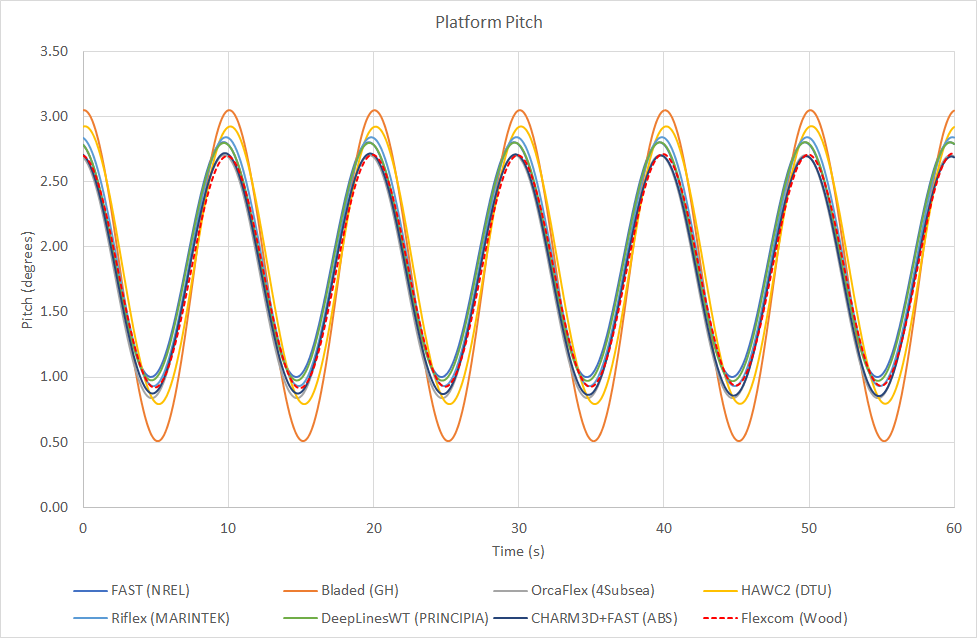
The generator power shows considerable variation across the different software products, with the mean power of the OC4 software tools considered ranging from 1.75MW (Bladed/GH, OrcaFlex/4Subsea, CHARM3D+FAST/ABS) to 1.99MW (Riflex/MARINTEK). The generator power predicted by Flexcom is slightly lower than most of the other software tools - Flexcom's mean power is 1.71MW, 6.7% below the average.

The variations in generator power are also evident in the primary variables of generator torque and rotor speed.
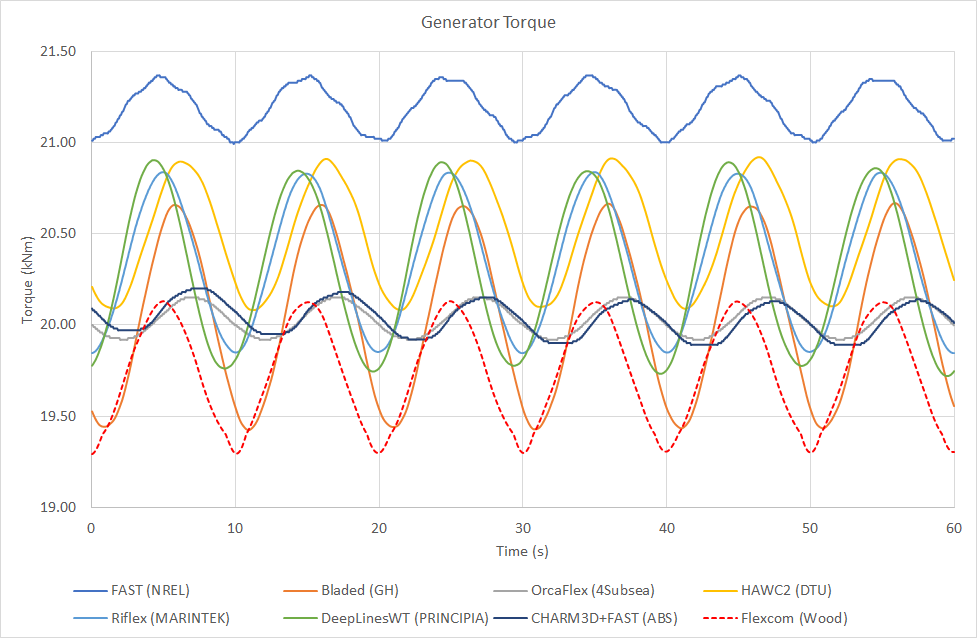
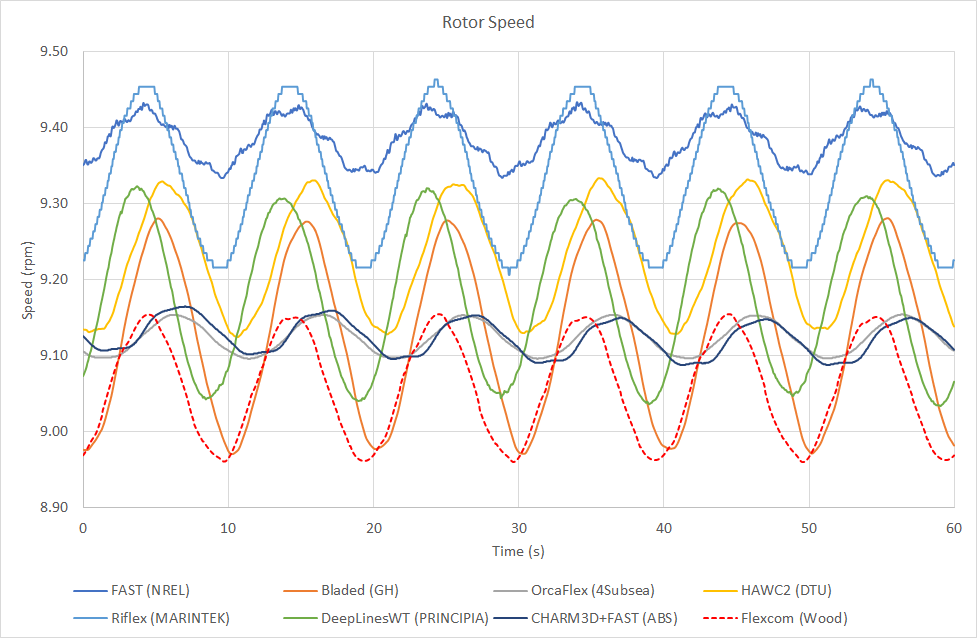
It is worth noting that the Flexcom results were produced using Flexcom 8.12.1 which is coupled with AeroDyn V15.02.04 (14-Apr-2016). The OC4 Phase II results were published in 2014 at which point the latest version of AeroDyn was Version 14. Improvements to the aerodynamic modelling software primarily account for the differences in generator power predicted by Flexcom and NREL/FAST. Slightly different platform motions predicted by each software tool also influences generator power. Variations in the aerodynamic theories underpinning each software product may also be a contributing factor. You are referred to OC4 P2 LC3.1 if you are interested in a more detailed discussion.